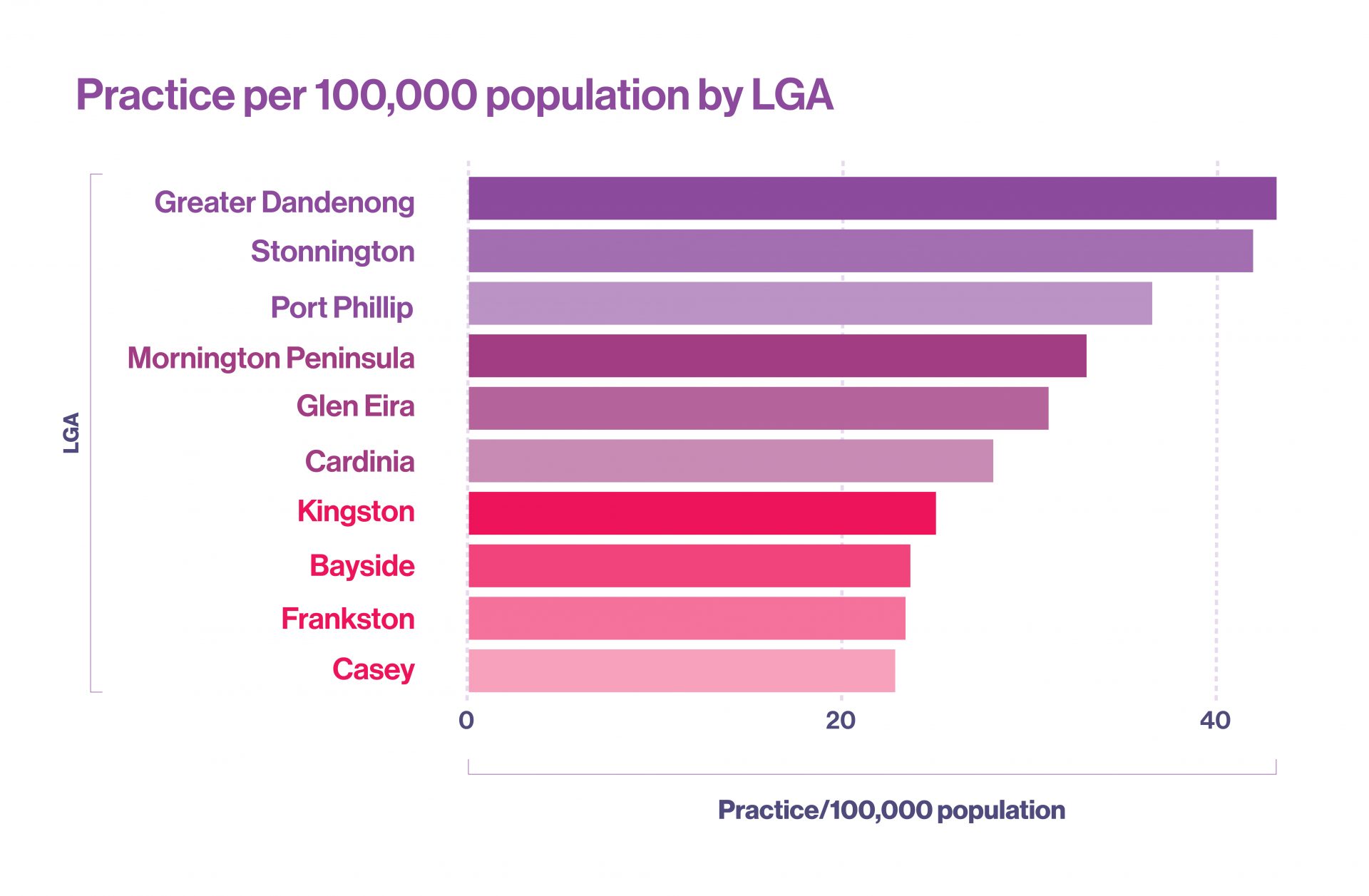Our diverse population
Around 200 languages are spoken in our catchment. In Greater Dandenong, more than half of residents were born in a non-English speaking country
We have one of the most diverse populations in Australia. This includes diversity in demographics, disadvantage, density, access to public transport, risk factors, health outcomes and use of health services. As a result, people in our community experience a range of health determinants that pose a challenge to achieving positive health and wellbeing outcomes.

The last (2016) census revealed that 61 per cent of people in our catchment were born in Australia. Almost a quarter were born in mainly non-English speaking countries. The City of Greater Dandenong is the most diverse in this aspect, with over half of its residents born in a non-English speaking country, and 30% of people speaking only English at home.
General practices across the catchment
The highest number of general practices are located in the Local Government Areas (LGA) of Casey and Dandenong (80 and 72, respectively). However, compared to the population size in each LGA, Casey has the lowest rate of general practices per 100,000 population.

Our health services
In the Local Government Area (LGA) of Cardinia, there’s less than one GP per 1000 residents (and yet, this LGA is projected to have the highest population growth in the next 10 years). In Stonnington, there are almost two GPs per 1000 residents

479
General Practices

2782
General Practitioners

341
Pharmacies

200
Medical Specialists
Understanding the health needs of our community
We have rigorous processes for identifying community needs. Each year, we look at the specific health needs of the people in our region, using more than 100 sources of population, health and service-usage data
An important activity that supports our work on health services commissioning, is the development of our annual Needs Assessment.
Information within the Needs Assessment helps us, and our partners, better understand the specific health and service needs of our community and identify key priorities and health issues.

Frankston and Greater Dandenong are the most disadvantaged areas in our region, and also have the poorest health outcomes

Our health priorities
Evidence-based practice is the foundation of our work, and we are constantly asking, ‘together, how can we do this even better?
The Australian Government has seven priority areas for improvement and innovation for primary health: Mental health; Alcohol and Other Drugs (AOD); Aboriginal and Torres Strait Islander Health; Aged care; Population health; Health workforce development and Digital health.
Mental Health
Alcohol and Other Drugs
Aboriginal and Torres Strait Islander Health
Aged Care
Population Health
Health Workforce Development
Digital Health
We challenge the status quo and often design things differently, with a very clear goal to measurably improve health. This is the ultimate indicator of our success.
Data related to population health and health services is sourced by our teams who are experts in their fields. Our analysis involves looking at a mix of evidence from local, state and national levels. This includes the census, departmental reports, Medicare and pharmaceutical datasets, and research publications.
All year round, hospitals, GPs, community health, consumers and carers are all invited to contribute to our Needs Assessments via consultations and surveys. All of this information is important because it helps us to understand any barriers and helps determine how to improve and design better health services for our community.







 Our Growing Community
Our Growing Community
 Our Health Needs
Our Health Needs